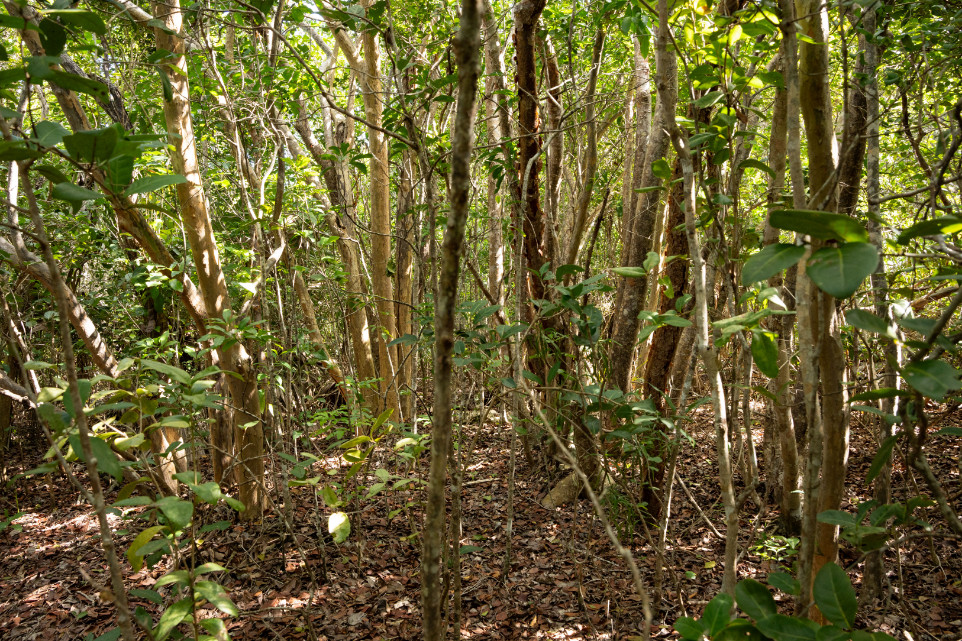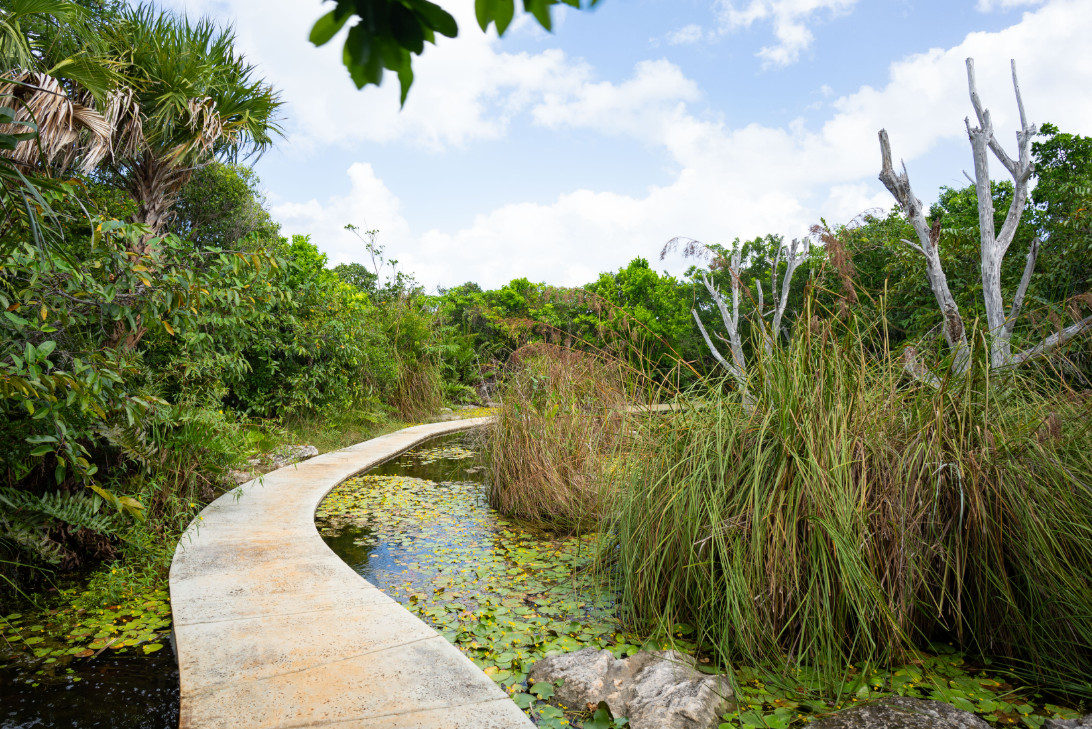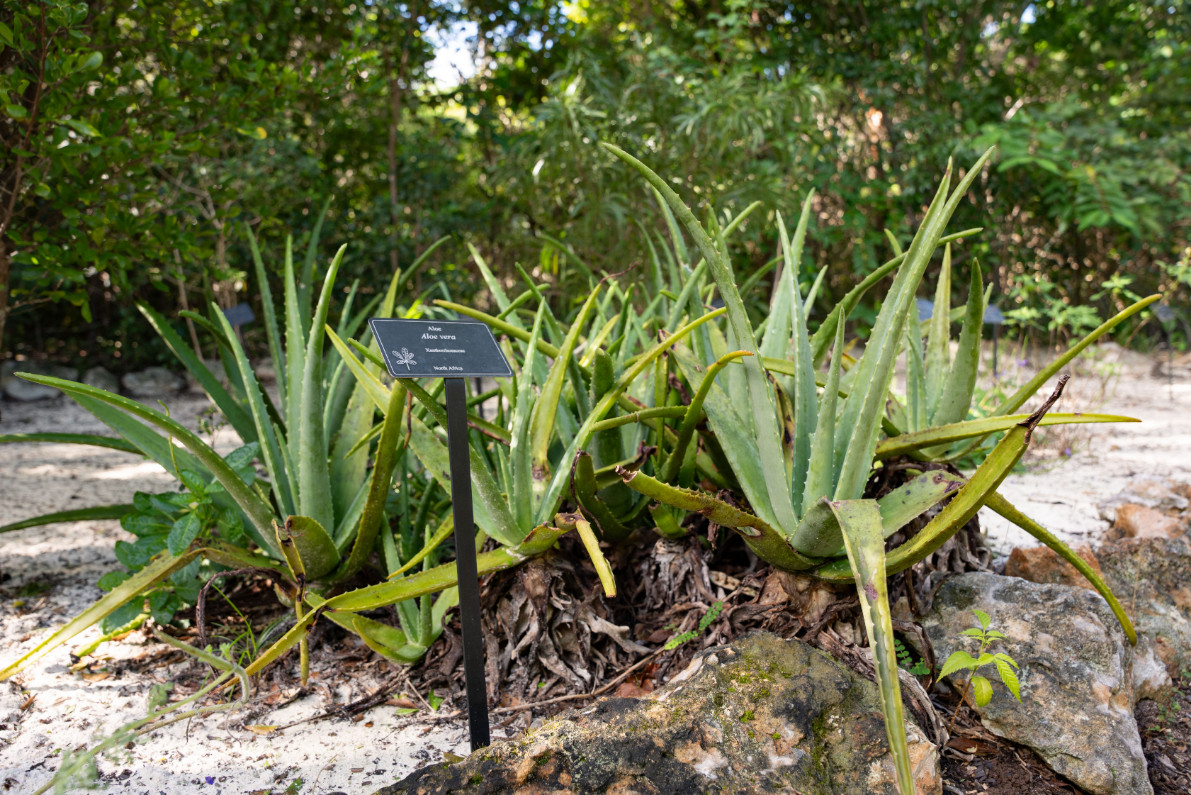Living Collections
The Levy Preserve has many different types of living collections. These include natural areas, constructed habitats, display beds, and species held in the Lath House and open-air Nursery.
As part of the Preserve’s mission to showcase the flora of the Bahamas in its living collection, expeditions are organised to islands to collect seeds and whole specimens. There is a prioritised collections policy and an accessioning program that tracks the collections over time. The current number of species represented within the living collection is 410, the majority of which naturally occur at the Preserve. The main priority for living collections is Bahamian endemic plant species and representatives of each genus and family.
Natural Areas
The natural areas of the Preserve comprises Dry Broadleaf Evergreen Formations – Forests (Multi species coppice) and Woodlands (Silver Top Palm dominated) and Mangroves. These two systems cover the vast majority of the Preserve. There are sections that have been left entirely intact (Tower Trail) other than the trail and tower with no species added. Then there are other areas where additional species have been brought in from collection trips around the archipelago to further showcase different groups or stories (Epiphyte trail, Mangrove Wetland, Economic Botany Trails).


Created Habitats
The Preserve has entirely created a FreshWater Wetland area in the old rainwater cistern in the centre of the Preserve. Within the cistern numerous freshwater species now occur from collections primarily from Andros island where there are the largest areas of standing freshwater in the country.
Display Beds
There are 22 different display beds leading from the Mangrove Boardwalk past the Education Pavilion to the Lath house. Eight of the beds showcase medical plants of the Bahamas. These collections also include some non-native species such as Aloe that have been used in the Bahamas for hundreds of years. There is one bed showing poisonous plants that cause dermatitis (rashes and blisters). The additional 13 beds are show beds that include endemic species as well as beds that are based on taxonomic groups such as the Agaves and the Legumes.


Nursery System
The nursery system holds more than 75 native species in cultivation including 10 endemics and 45 tree species.